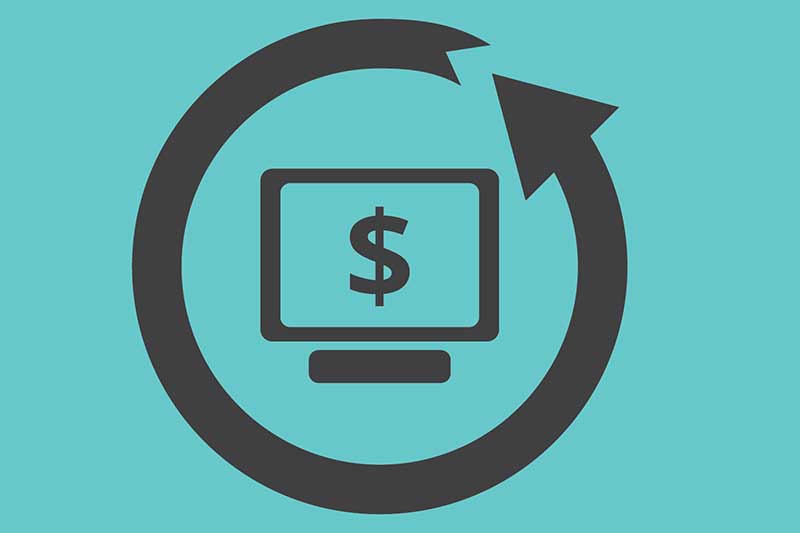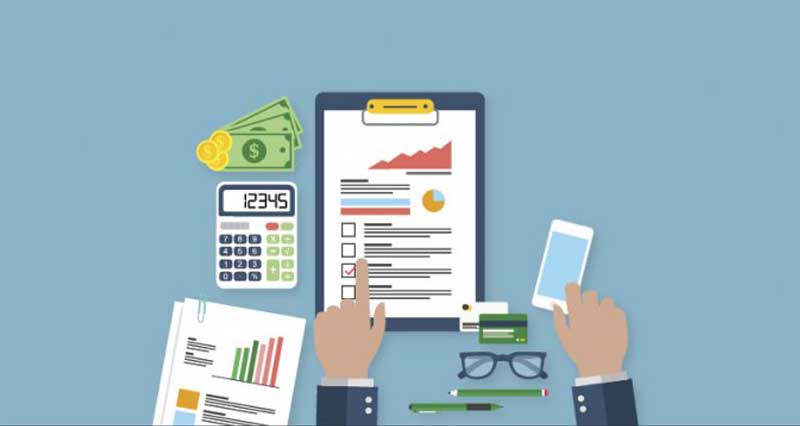Recurring revenue: why this is a good idea for online courses
A common doubt for most people who are starting their own business, is how to charge for their services. Many professionals who are launching online courses simply don’t know how to create a business model that generates recurring revenue, which they can count on every month.
It’s at this point that is worth looking at how some successful companies operate. One of the best examples today is the giant Netflix and its recurring economy model.

What is recurring revenue?
Recurring economics is a business model in which the company makes a scalable profit for continuous periods. That is, instead of selling a product for a closed single price, companies like Netflix sell subscriptions that generate monthly income, a recurring revenue.
Popularly known as the subscription plan, recurring revenue is based on the sale of services that are charged monthly.
Companies that operate with this charging model have a much greater chance of sustainability in relation to those who need to make a single sale every time.
– Benefits of Recurring Payment for Online Courses
See some segments that work with this business model:
- Software as a service (Adobe, Coursify.me)
- Streaming service (Netflix)
- Hosting service (Coursify.me)
Note that recurring revenue is the backbone of SaaS and the companies that sell their services by subscription.
In such cases, customers purchase a service consistently, which gives the company the ability to project future revenue more accurately.
– How to do the sales forecast of your online business
Recurring revenue can be calculated with metrics such as turnover rate and user growth rate for a realistic view of the company’s future revenue. That kind of predictability is very valuable in business.
Adobe Case
On April 23, 2012, Adobe moved from a sales model based on non-recurring revenue to a subscription model when it announced Adobe Creative Cloud.
This change resulted in a 35% drop in revenue the following year. However, according to Harvard Business Review, “in April 2016, Adobe’s stock price almost tripled from four years earlier.”
Although Adobe experienced short-term losses, the company understood the long-term value of switching to a model that offers more predictability.
Prior to the Creative Cloud offering, Adobe had a limited view of future revenue. They could only assume that customers with earlier versions of the software would purchase newer versions. Nothing pressured them to pay more.
Adobe now offers updated versions of the software to customers who pay monthly fees.
5 advantages of relying on recurring revenue
Subscription-based businesses are on the rise. Several organizations that used the single payment model are changing the way they do business.
With recurring revenue, your company can see substantial and sustainable growth, in addition to higher revenue and customer lifetime values. This helps you grow your business more easily and quickly.
Here are other benefits of recurring revenue for your business:
1. Attracting more customers
Paying $ 25 a month is more attractive to consumers than paying $ 500 at once. There are exceptions, but in general, the more expensive your product is, the less customers will be able to make the purchase.
Subscription payments lower the entry barrier for products and services and allow more potential customers to buy your product. Although they may have to pay a larger amount in the long run, they can gain immediate access to the product. In these cases, customers also enjoy the benefits and updates that the company offers over time, as it grows and improves its product / service.
2. Predictable revenue
When operating a single payment model, you need to constantly attract and convert customers to earn revenue. This, in addition to giving much more work, is expensive.
A month with poor performance can cause losses and make it more difficult to recover the investment you have already made in acquiring customers.
With a business based on signature, customers make regular payments, which allows you to have a strong sense of your monthly income. This also ensures that you are not ordering more supplies than necessary.
3. Increased return on customer acquisition costs
Single payment models have a defined rate of return on customer acquisition cost (CAC). With the subscription model, however, there is no standard return for this key measure.
This is because, although the CAC remains similar (depending on the marketing and conversion route), the CLV will increase.
The length of time customers remain enrolled in your business can vary, and reducing the user turnover rate is an essential aspect of leveraging this specific advantage.
4. Cross-selling gains
As you have continuous contact with your customer base, you will be building a strong bond of trust. This facilitates the marketing of additional and complementary services.
Increasing sales is usually easier with a subscription business, as the customer has a previous relationship with your company and will be receptive to any added value you may offer.
In addition, once subscription fees become part of consumers’ monthly or annual budgets, it’s easy to see additional features as more affordable. This is especially true for customers who use their subscription to learn and grow, as is the case with online courses, as they consider that add-ons allow them to achieve their goals more efficiently.
5. Possibility to offer a free trial
In single payment systems, it is difficult to offer a trial period. Even with a free trial, the total price of the item can be a potential impediment to a subscription.
Recurring revenue-based products and services make this much easier, allowing you to provide free versions as a strategy to attract customers to subscribe to the full package.
Even if the customer does not sign up immediately, it is likely that he has provided contact details that can be used to send out a newsletter with promotions to convince him to sign up later.
Customers also benefit from the fact that the product is always updated, allowing them to reduce the turnaround time for any new features implemented in the product.
– Free online courses as a strategy to attract students
How to apply this business model to online courses

For those who work with the sale of online courses, the recurrence economy is an excellent idea to keep a captive audience and guarantee recurring revenue.
The focus of the business is no longer just the sale of a single course, but a subscription plan.
This may seem difficult considering that a course has a beginning, middle and end, but again, when in doubt, good market research can show you how some similar and successful businesses do.
Companies that already put this subscription system into practice work with content offered in a personalized, flexible way, breaking the linear teaching system that will eventually cause you to lose your student.
– 7 Strategies to Create an Online Class Successful
Allowing the student to set up their own program of study, choosing modules or classes of interest, which they will attend for the time they prefer, creates a more flexible system, where there is not necessarily a deadline for neither party.
Another way to practice recurrent economics in online courses, as mentioned above, is to work with cross-selling.
This mode of sale offers the customer a product or service complementary to the one he has already used. For distance learning courses this is easily applicable, as it is possible to offer study material that the student can access after the end of classes, for example.
When applying this business model the professional gains time to prepare new, more complete and differentiated material, which will help to keep the interest of his students, since he will not have to focus all his efforts on constant search for new customers.
To make it even easier, billing in this business model is usually done through software that debits the amount monthly from the customer’s account.
Recurring revenue is the result of a sustainable business model, which is based on commercial relationships that seek to maintain consumer loyalty.
This model has attracted several instructors, who are changing the way they sell online courses in order to maintain revenue, have more time to devote to preparing classes and less worry and costs in the search for new students.
All you need is an online course hosting platform like Coursify.me, which has integration with PagSeguro, PayPal and soon with Stripe, allowing you to receive payment in the form and currency of your choice.
Ideal for those who want to sell courses online, the platform allows payment to be received in a single installment or on a recurring basis.
Present in over 60 countries, Coursify.me is the perfect solution for you to start your own business without investing anything for it.
To learn more, visit our website, test the platform and understand why we are the best option for your business.

